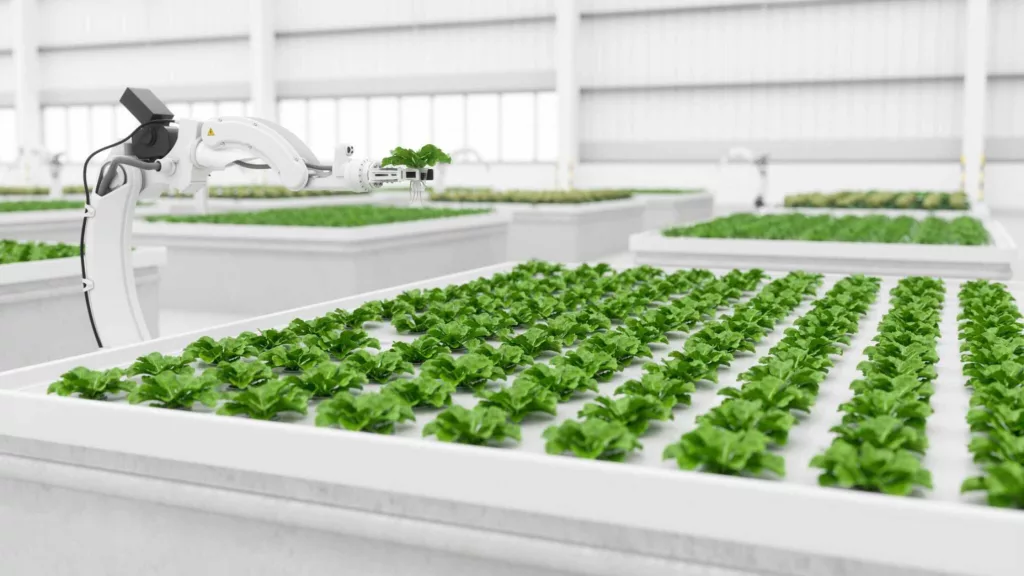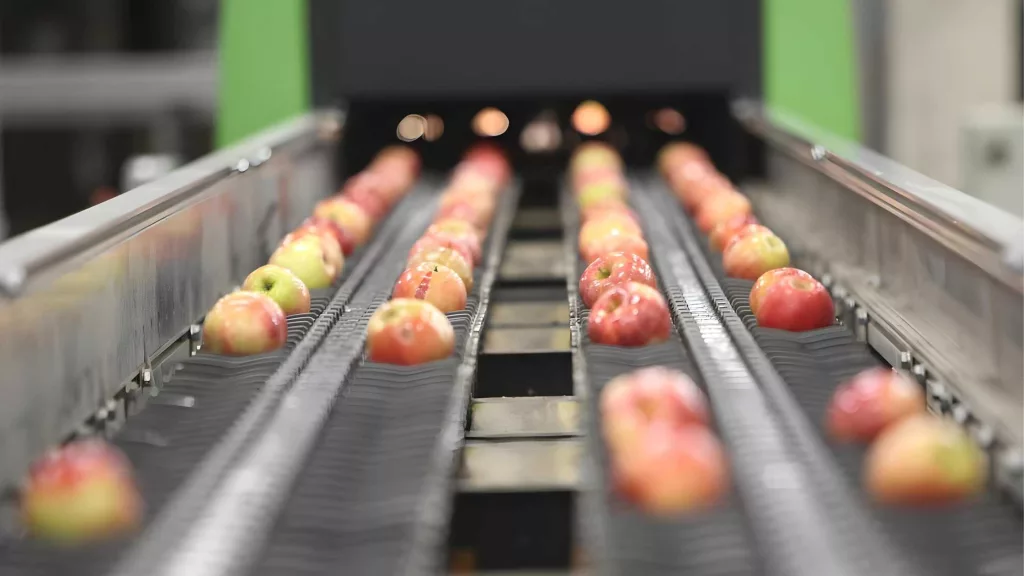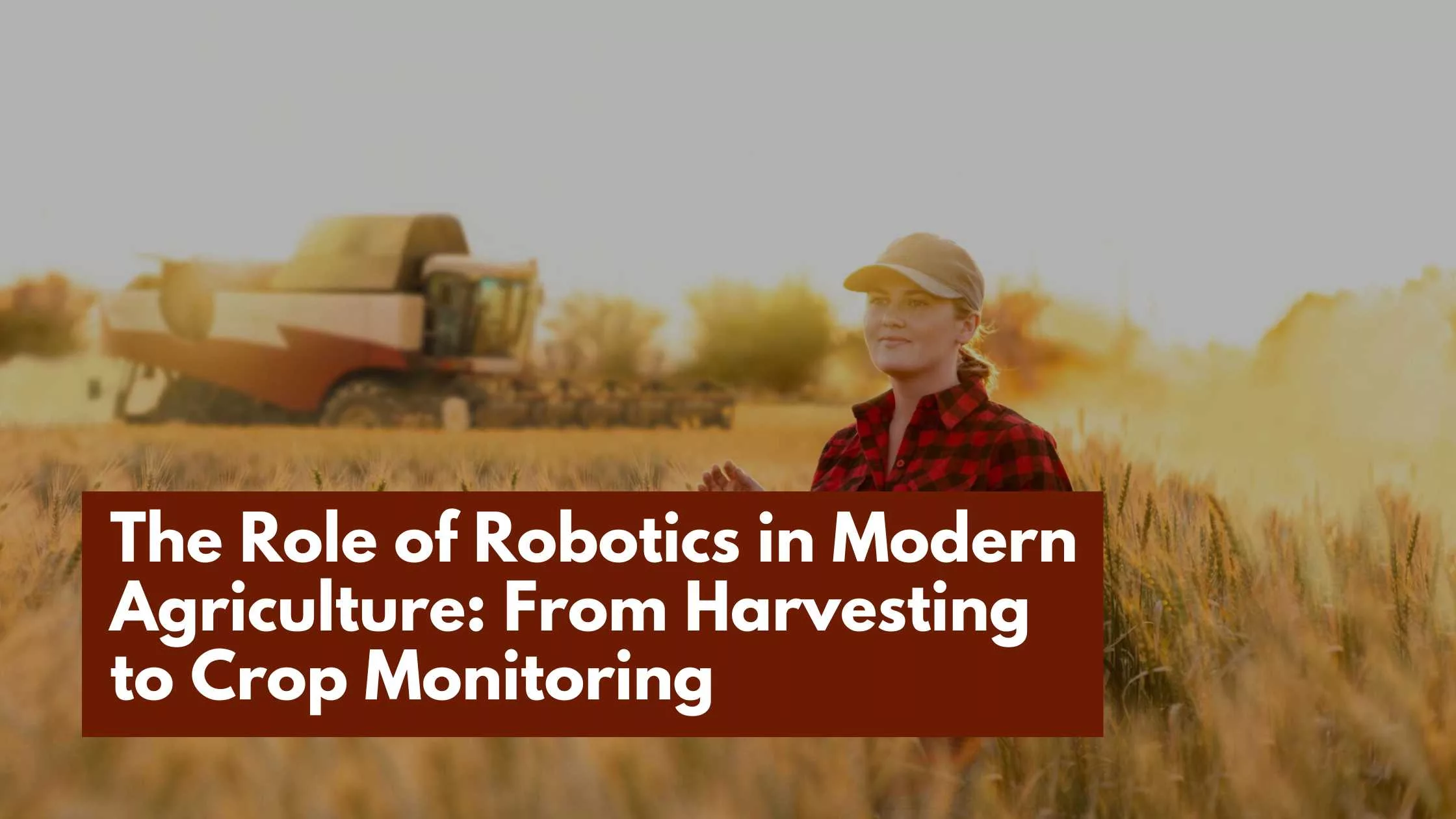What is Robotics in Agriculture
Agriculture robotics, often called Robotics in Modern Agriculture or Agri-robotics, uses robotic systems and technology in various agricultural activities. It entails the employment of robots or automated systems to undertake cultivation, harvesting, monitoring, and other agricultural duties.
Agriculture robotic systems can range from simple devices to complicated, autonomous robots equipped with robust sensors, computer vision, and artificial intelligence. These robots are intended to help farmers and agricultural workers in various ways, including increasing efficiency, precision, and productivity in farming operations.
How to Use Robotics in Agriculture
Here are some significant processes and considerations for using robotics in Modern agriculture:
Determine your requirements and challenges:
Examine the unique requirements and problems of your agriculture enterprise. Determine whether tasks can be automated or enhanced using robotics. Planting, harvesting, monitoring, spraying, and data collecting are examples of such duties.
Investigate available technologies:
Investigate the many robotic systems, sensors, and technologies on the market. Consider cost, dependability, compatibility with your farm setup, and the unique needs of your crops.

Design and planning:
Once you’ve determined the jobs you want to automate, plan and design the integration of the robots into your agricultural operations. Consider your field layout, the sort of crops you plant, and the current infrastructure.
Select the appropriate robots and equipment:
Choose the robotic systems and equipment that best meet your needs. This might include self-driving cars, drones, robotic arms, and specialized gear. Ascertain that the robots picked have the requisite capabilities, such as precise navigation, sensing, and task execution.
Sensor and data collecting integration:
Determine the sensors and data collection techniques needed for your robotic systems. This might include cameras, LiDAR, GPS, soil, or weather sensors. These sensors will offer decision-making data and allow the robots to do their duties precisely.
Create or purchase software:
Depending on the complexity of your robotics system, you may need to create or purchase software to control and program the robots. This may entail creating algorithms for navigation, object identification, and path planning. Alternatively, collaborating with robotics businesses or developers can get the necessary software.
Test and refine:
Before deploying robots on a broad scale, thoroughly test and refine the robotic systems. Test the robots in various field situations and keep track of their performance. To guarantee optimal operation, make modifications and enhancements depending on the results.
Maintenance and training:
Teach your farm staff how to operate and maintain robotic systems. Please give them the knowledge and abilities to undertake routine maintenance, troubleshooting, and minor repairs. A maintenance plan must be in place to keep the robotic equipment’s durability and effectiveness.
Continuously monitor and assess the robotic systems’ performance and their influence on your agricultural operations. Gather information on productivity, cost savings, crop quality, and other vital parameters. Use this data to make more educated decisions and optimize your robotic setup.
Keep up to date:
Robotics and agriculture technology are rapidly advancing. Keep up to speed on the most recent breakthroughs, research, and industry trends. Attend conferences, workshops, and seminars to learn about new technology and best practices.
Remember that incorporating robotics into agriculture is a long process. Begin with small-scale implementations and gradually grow as you develop expertise and trust in the technology.
Impact of Robotics on Agriculture
The influence of robots in agriculture is substantial, as evidenced by the following:

Productivity gains:
Robots can operate indefinitely and efficiently, executing repeated tasks precisely and quickly. They can be used throughout the clock, resulting in enhanced agricultural yield. Farmers may achieve more in less time, increasing yields and overall efficiency.
Labor efficiency and shortage mitigation:
Labor shortages are common in agriculture, particularly during peak seasons. Robotics contributes to addressing this issue by lowering dependency on human labor. Planting, harvesting, and spraying operations can be handled by automated equipment, freeing up human employees for more skilled or strategic duties.
Cost savings:
While the initial investment in robotic systems may be significant, long-term cost reductions may result. Robots can save labor expenses, eliminate the need for human maintenance, and optimize resource utilization. Precision fertilizer, pesticide, and water application can result in cost savings and waste reduction.
Crop quality has improved because robots outfitted with sensors and cameras can continually monitor crops, delivering real-time data on crop health, growth, and quality. This enables early identification of illnesses, pests, and nutritional deficits, allowing for rapid management. Robotics can help enhance crop quality and consistency by maintaining ideal growth conditions.
Sustainable agriculture:
By optimizing resource utilization, robotics encourages sustainable agricultural practices. Precision application of inputs like fertilizers and insecticides reduces misuse, lowering environmental impact and water contamination. Furthermore, robots may target specific locations or plants, minimizing the need for blanket sprays and, as a result, encouraging sustainable agricultural practices.
Data-driven decision-making:
Robotic systems create a lot of data on crop health, soil conditions, weather patterns, and other topics. This information may be analyzed to acquire valuable insights and to inform decision-making. Farmers may make data-driven decisions about irrigation, pest management, crop rotation, and other agricultural practices, which results in better resource allocation and yields.
Enhanced worker safety:
Farming might include dangerous jobs and chemical exposure. Robotics can increase worker safety by automating certain operations and reducing the chance of accidents and exposure to hazardous chemicals. Human employees may concentrate on supervision or maintenance tasks, decreasing physical strain and the risk of injury.
Precision farming:
Robotics allows for precise and focused actions in agricultural operations. Robots are capable of high-precision activities like seed planting, weed identification, and selective harvesting. This accuracy decreases resource waste, cuts chemical use, and increases agricultural output.
Climate change adaptation:
Climate change presents obstacles such as unexpected weather patterns and altered growth conditions. Agriculture robotics enables more effective adaptation and response to these difficulties. Based on real-time data, automated systems may monitor and alter agricultural practices, allowing farmers to optimize productivity even in changing settings.
Overall, the influence of agricultural robots is transformational. It promotes data-driven decision-making and increases efficiency, sustainability, and production while solving labor concerns. As technology advances, the potential for more innovation and beneficial influence in the agriculture industry grows exponentially.
The Role of Robotics in Modern Agriculture
Robotics’ function in modern agriculture is diverse, encompassing numerous elements of farming operations. Here are some of the most critical tasks that robotics play in modern agriculture:
Labor-intensive task automation:
Robotics enables the automation of labor-intensive agricultural jobs. Planting, harvesting, weeding, and sorting are repetitive tasks that robots can accomplish accurately and regularly. Robots relieve physical strain on human employees and free up their time for more skilled or strategic operations by taking over these chores.
Robots outfitted with sensors, cameras, and modern technology make precision farming and resource optimization possible. They may collect data on soil conditions, moisture levels, crop health, and other variables, enabling tailored actions. This data-driven method optimizes resource utilization, such as water, fertilizers, and pesticides, while minimizing waste and environmental effects and increasing crop production.
Data collecting and monitoring:
Robots, drones, and self-driving vehicles outfitted with sensors and cameras may continually monitor crops and fields. They gather information on crop growth, insect infestations, disease outbreaks, and other plant health parameters. This real-time data offers farmers vital insights to make informed irrigation, pest control, and crop management decisions.
Autonomous navigation and mapping:
Advanced navigation skills allow robots to navigate fields automatically. They can create precise maps of the landscape, identify impediments, and adjust their courses appropriately. Even in complicated agricultural situations, this enables rapid and safe navigation.
Robots provide a selective and targeted application of inputs like fertilizers, herbicides, and insecticides. Using sensors and computer vision, robots can recognize and target particular regions or individual plants that require care. This decreases chemical consumption, reduces environmental impact, and improves application efficacy.
Crop monitoring and disease detection:
Crops can be monitored for symptoms of disease, nutritional deficits, or insect infestations by robots equipped with modern imaging technology and computer vision algorithms. They can detect particular plant illnesses or anomalies early on, allowing for prompt intervention and lowering crop losses.
Analytics and data-driven decision-making:
Robotics creates a large quantity of data that may be analyzed to provide valuable insights. Farmers may use this data to make data-driven choices about crop management, resource allocation, and overall farm operations. Analytics aids in the optimization of agricultural practices, the prediction of yields, and the identification of areas for development.
Greenhouse automation:
Robotics is vital in greenhouse operations. Temperature, humidity, and ventilation may all be controlled by automated systems to provide ideal growing conditions. Robots may also undertake operations like sowing, watering, and crop health monitoring in greenhouses, maximizing production and efficiency.
Agricultural monitoring and security:
Sensor and camera-equipped robots can monitor and secure agricultural properties. They can detect intruders, observe animals, and identify possible threats or hazards. This improves farm security, decreases losses, and increases overall safety.
Research and development:
Agriculture robotics acts as a research and development platform. Scientists and engineers may use it to create and test new technologies, algorithms, and applications. Robotic breakthroughs contribute to the continual progress and evolution of current agricultural practices.
Robotics are transformational in modern agriculture, improving efficiency, sustainability, and production. It tackles labor issues, optimizes resource utilization, and provides farmers with data-driven insights for making educated decisions. Robots in agriculture are projected to increase further as technology advances, spurring innovation and altering the future of farming.
Conclusion
Finally, robots have significantly influenced agriculture, revolutionizing farming practices and tackling critical industrial difficulties. Robotics is essential in modern agriculture, from labor-intensive job automation to precision farming and data-driven decision-making.
Robots in agriculture increase production, improve crop quality and optimize resource use. Robots free up human labor for more skilled and strategic operations by automating repetitive and physically demanding jobs, easing labor shortages and lowering costs. Precision input applications and tailored treatments enable sustainable agricultural practices while reducing chemical use and environmental effects.
Furthermore, robots offer real-time crop monitoring, disease and pest identification, and data collecting. This data-driven method enables farmers to make educated decisions about irrigation, pest control, and crop management, resulting in higher yields and more efficient resource allocation.
Beyond field activities, robots have a role in greenhouse automation, farm security, and research and development. It promotes innovation by promoting the continuing progress of agricultural technology and practices.
As technology advances, robotics will be increasingly important in defining agriculture’s future. Increased efficiency, sustainability, and resilience in farming operations have enormous promise, offering a more productive and sustainable agricultural business in the future.



